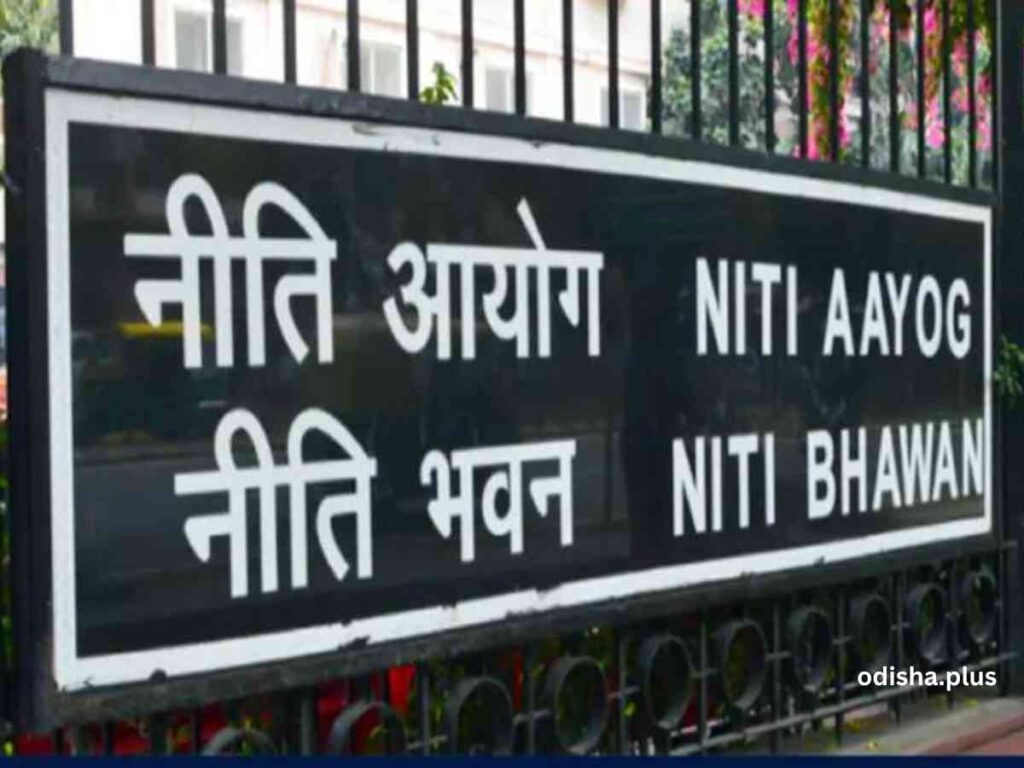Based on the analysis and the construct of the index, Odisha comes as the overall topper among the 18 states with a score of 67.8
Subash Chandra Misra

Recently, the Niti Aayog published a report on the fiscal health index (FHI) of the Indian states for the financial year 2023. In a federal structure like ours, states are key players in the areas of agriculture, education, infrastructure, human resources, urban and rural development, and poverty alleviation which are essential for the overall growth of the country and states are the primary players to take us to achieve the aspiration of becoming a developed nation by 2047. Therefore, it is essential to measure from time to time the fiscal health of our states and take mid-term corrective action, if necessary.
There have been proposals from time to time to construct an index to measure the fiscal health of states in the non-special category by taking some important parameters. The pioneering works in this direction came from the 2005 paper of Archana Dholakia followed by the 2016 paper of Mohanty and Mishra, the 2019 discussion paper of the Confederation of Indian Industry, and the 2024 paper by Sudipta Mondal and Manish Gupta.
Composite FHI
These authors have been given due credit in the report of the Niti Aayog. The NSE prepared an index called the State of States Index in 2020. CareEdge Ratings, a credit rating agency published the first edition of their report titled ‘States’ Ranking’ in 2023. The inaugural version of the FHI published by the NITI Aayog in January 2025 is the culmination of the efforts made so far. The composite FHI has been developed using data for 22-23 from the CAG focusing on five parameters viz. Quality of Expenditure, Revenue Mobilization, Fiscal Prudence, Debt Index and Debt Sustainability. This analysis is supported by data showing the trends of major fiscal indicators from the financial year 2014- 15 to 2021-22.
Article 280 of the constitution of India provides for setting up a finance commission to study, review, and recommend for distribution of revenues between the center and states. So far fifteen Finance commissions have been set up each with a tenor of five years. While certain revenues collected by the center are distributed between the center and the state, the state governments themselves collect certain revenues.
States have come a long way after independence when the total receipt of the state governments was Rs. 242 crore which rose to the level of Rs. 48.6 lakh crore (budgeted) in 2024-25. Simultaneously the expenses of the states also have gone up from Rs. 39857 crore in 1984-85 to a budgeted figure of Rs. 57.6 lakh crore in 2024-25. Within this, all states are not equal performers. While some are good in the collection of revenue, some are good at managing expenditure and a few others manage the debt better. The FHI carries significance as it gives an understanding of the fiscal health of the states.
The quality of expenditure parameter has been analyzed by taking into account the developmental expenditure and non-developmental expenditure. The higher the share of developmental expenditure in total expenditure, the better for the economy as developmental expenditure creates assets that will earn in the future. Revenue mobilization has been taken as a percentage of GSDP as well as a percentage of expenditure. Higher revenue mobilization is better for the state.
Under fiscal prudence, the index takes into account the revenue deficit and the gross fiscal deficit. The Index takes into account the debt index and debt sustainability of the states. The debt index covers interest payment as a percentage of revenue receipt and the outstanding debt as a percentage of the GSDP. Under debt sustainability, the index takes into account the growth rate of GSDP and the growth rate of interest payment. A positive difference suggests that the economy is healthy and the debt is sustainable in the long run. The final composite FHI score is computed by taking the arithmetic mean of the five major sub-indices.
Based on the analysis and the construct of the index, Odisha comes as the overall topper among the 18 states with a score of 67.8. Odisha is followed by Chhatisgarh, Goa, Jharkhand, Gujarat and Maharashtra. Punjab remains at the bottom with a score of 10.7.
Odisha Tops
The states at the bottom which remain above Punjab are Andhra Pradesh (17th rank), West Bengal (16th), Kerala (15th) and Haryana (14th). Odisha tops the list under the heads ‘Debt Index’ and ‘Debt Sustainability’ with scores of 99 and 64 respectively. The state has maintained a low fiscal Deficit, good debt profile, and above-average Capital Outlay/GSDP ratio. Under the head ‘Quality of Expenditure’ MP tops the list with a score of 59.7 for allocating a higher share of resources to the social sector and capital expenditure. With 68% of revenue coming from its tax and non-tax revenue sources, Goa is a topper for ‘Revenue Mobilisation’ with a score of 87.1.
With a score of 62.4 Jharkhand comes as a topper under ‘Fiscal Prudence’.
In 2022-23, the State had a revenue surplus of 3.3% and; a fiscal deficit of 1.1% indicating reduced dependence of the state on borrowed funds. The state also maintained a revenue surplus for the period 2018-19 to 2022-23 except in 2020-21. The revenue receipts were a major source of funds in 2021-22 and 2022-23. Some of the states at the bottom of the index like Punjab, Andhra Pradesh, and West Bengal scored low on most of the parameters. While Punjab scored zero in the ‘Debt Index’, AP scored zero under ‘Debt Sustainability’.
The gross fiscal deficit of states which remained in the range of 2 to 3 % from 1980 to 1998 went down to a 2% level by 2007-08 but moved up thereafter to 3.7% of the GSDP in 2021-22. Some of the parameters like revenue generation, quality of expenditure, and debt sustainability will go a long way to keep the fiscal health of a state in order.
While Goa, Odisha, and Telangana have done well under revenue mobilization, Bihar and West Bengal have done poorly in this parameter. The ‘Quality of Expenditure’ is good for MP, Bihar, Chhatisgarh, and Odisha, but poor for Kerala and West Bengal. Thus, all state Governments are not equally strong in their finances. The weaker states need to take steps to improve. Reforms are needed in the grant of subsidies, creation of infrastructure by stepping up investment through the PPP method, and reduction of unproductive revenue expenditure to make more resources available for capital expenditure.
Fiscal Consolidation
A study on the budgets of states for the year 2024-25 conducted by the RBI was published in December 2024. As per the report, at the aggregate level, the revenue receipt of the states remained within a range of 13 to 14% of the GDP in the last 2-3 years, and their revenue generation has also been within 7 to 8%. The revenue expenditure is rising fast and the capital expenditure is rising slowly. The Gross Fiscal Deficit as a percentage of GDP has been within a range of 3-3.5%.
The report concludes that the State governments have made commendable progress towards fiscal consolidation by containing their aggregate gross fiscal deficit within 3 % of GDP for three consecutive years (2021-22 to 2023-24), and restricting revenue deficit at 0.2% of GDP in 2022- 23 and 2023-24. However, several states have announced sops about farm loan waivers, free electricity, free transport, allowances to unemployed youth, and monetary assistance to women and the aged in their budgets.
Such spending could crowd out the resources available to them and hamper their capacity to build critical social and economic infrastructure. The high debt-GDP ratio, outstanding guarantees, and the increasing subsidy burden require States to pursue fiscal consolidation while laying greater emphasis on developmental and capital spending.
(The author is a Retired Chief General Manager of the Reserve Bank of India, Mumbai. Views expressed are personal.)




























